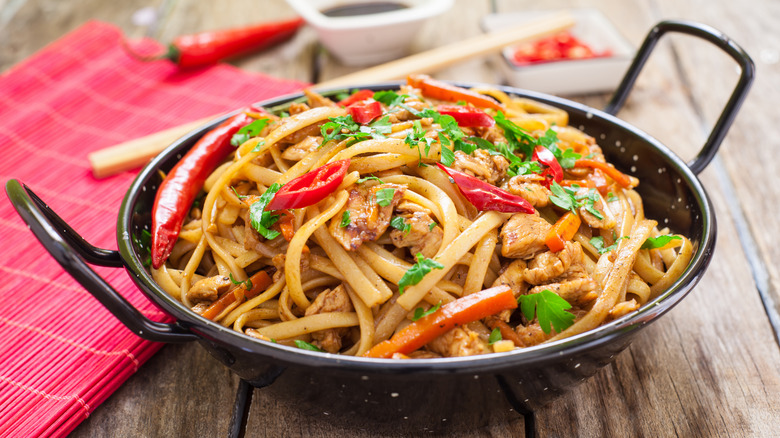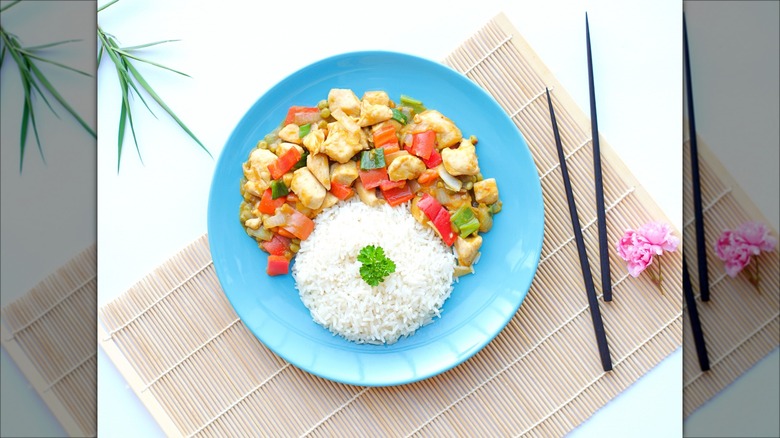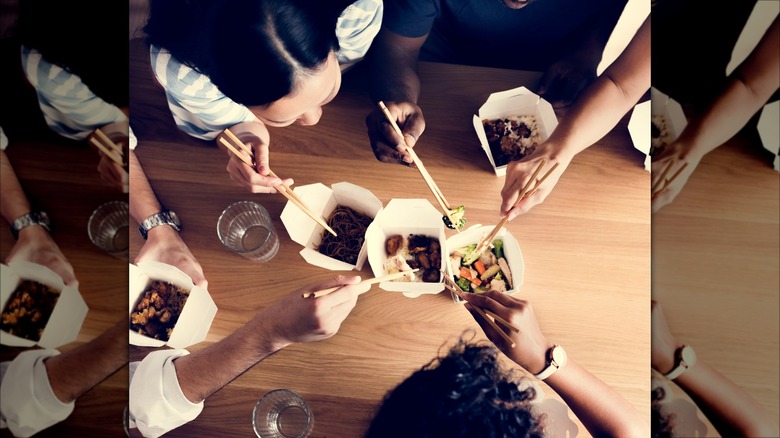What's The Difference Between Chop Suey And Chow Mein?
Chinese takeout is a popular cuisine that Americans consume regularly, and because Chinese food can be found pretty easily depending on where you live, that doesn't mean menus for these establishments can't widely vary in the items that they offer. The same can most certainly be said when you compare and contrast dishes found at a typical Chinese takeout restaurant in the U.S. with similar establishments in China (via Insider). For example, look no further than chop suey and chow mein for instance — two dishes that are loosely based on recipes that originated from China, but over the years have been altered to suit the American palate.
Though the first wave of immigration from China began in the mid-19th century, the popularity of Chinese cuisine in the U.S. didn't really take off until the 1960s, thanks to the implementation of relaxed immigration laws, per the BBC. This allowed trained Chinese chefs to enter the U.S. to set up shop and introduce Chinese food to the general American public, though it came with some drawbacks — most notably edging out the widespread traditional fare for completely Americanized creations like General Tso's chicken and crab rangoon. So what does this have to do with chop suey and chow mein?
Were chow mein and chop suey designed for American taste buds?
The Cantonese phrase chop suey translates loosely to "miscellaneous leftovers", which references that the dish was usually made from a collection of leftover vegetables like celery, carrot, bean sprouts, and whatever else was available. According to the BBC, chop suey was one of the first dishes created in America in the mid-1800s by immigrant Chinese workers with limited access to traditional Chinese ingredients. In that regard, the dish slowly transformed into what's served today: An intentional mix of quality meat and a blend of stir-fried veggies served over rice or noodles, with lots of sauce. As the BBC noted, chop suey went from being a food that only Chinese immigrants would eat in a time when the U.S. was largely anti-Chinese anything, to something advertised on every Chinese restaurant storefront once Chinese cuisine finally broke into the American mainstream.
Unlike chop suey, chow mein, which translates to English as "fried noodles" in Mandarin Chinese, has a very different backstory. A very popular dish in Northern China — where noodles are the main starch staple as opposed to Southern China, which favors rice — chow mein traces back to the Han Dynasty, which spanned roughly from 202 B.C. to 290 A.D. (via the National Museum of American History). In China, noodles for chow mein are traditionally boiled and then stir-fried with veggies. In comparison, the American version of chow mein is comprised of noodles that have been deep-fried, and are then topped with meat and veggies in a stew-like sauce resembling a gravy.
Both chow mein and chop suey are classics you should try again
If you put chop suey and chow mein side by side, it's possible that they could be confused as the same dish, albeit ones with slightly different ingredients. Technically, both could be classified as stir-fry dishes that can be served with noodles — but unlike chop suey, chow mein's deep-fried noodles are purely an American convention. Unlike in the U.S., the noodles for chow mein in China are pan-fired so that they are still soft and pliable when served (via Taste Atlas).
While these dishes aren't as popular in Chinese restaurants in America as they once were, they are still worth ordering. Both are homey, simple dishes that are not only tasty, but an important part of American and Chinese culinary history. If it weren't for dishes like chop suey and chow mein paving the way, Chinese restaurant menus might look quite different than they are today.


